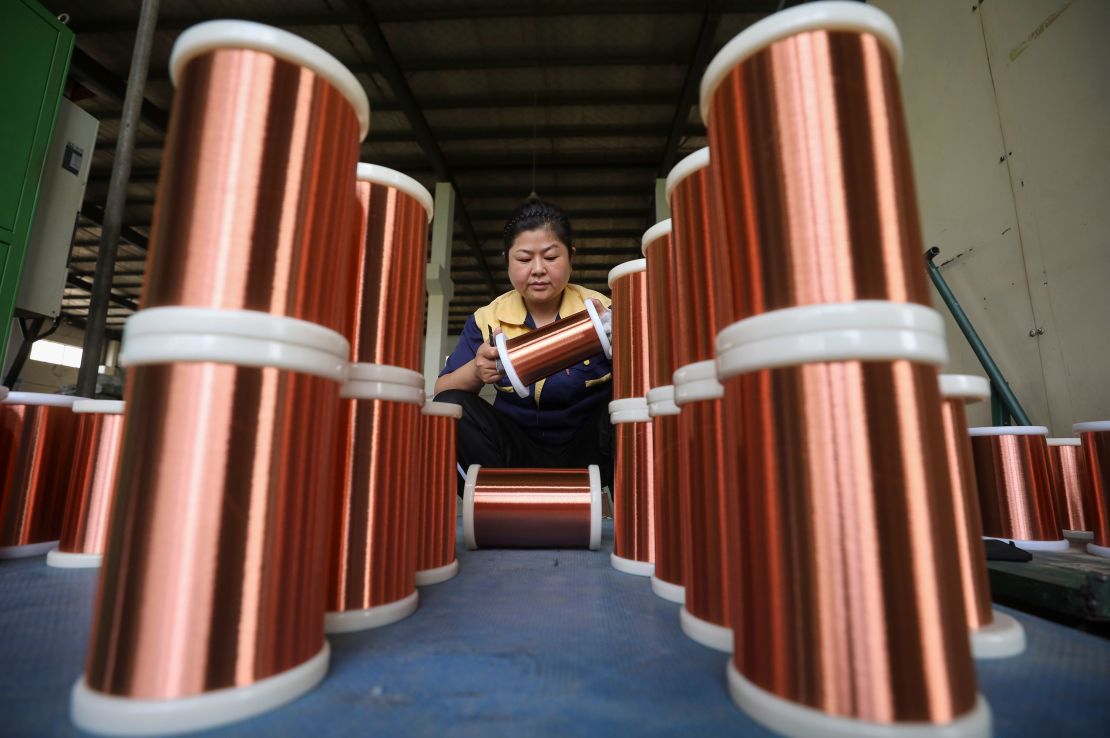CNN
—
President Donald Trump is forging ahead with his aggressive tariff campaign, moving on from “reciprocal” tariffs to the sector-specific tariffs he promised.
To do so will involve Trump’s continued application of Section 232 of the Trade Expansion Act of 1962, which allows a president to impose tariffs to protect or bolster domestic industries if there are deemed potential national security threats. What used to be a rarely employed trade provision has been a favorite instrument in Trump’s trade tool box during his two terms.
The Commerce Department previously launched Section 232 probes into copper and lumber. And earlier this month, the administration started investigating pharmaceuticals and semiconductors, according to Federal Register filings made public on Monday.
In addition to those active investigations, which have to be completed within 270 days after they began, the Trump administration has indicated plans to launch similar probes for critical minerals.
“The risk from (imposing duties) on imports of products where there are few substitutes is certainly greater, and that’s why there have been some exemptions and reductions in tariffs and exclusions of products that are of key importance to the US,” Gregory Daco, chief economist at EY-Parthenon, told CNN in an interview.

There have been notable exclusions from the slew of tariffs imposed by Trump, including goods compliant under the United States-Mexico-Canada Agreement; the products undergoing or in the pipeline for Section 232 probes; and, just within the past few days, the exclusion of smartphones, computer monitors and other electronics from the 145% “reciprocal” tariff on Chinese imports.
The tech products exemption is intended to be temporary, Commerce Secretary Howard Lutnick said on Sunday, indicating that they’ll be wrapped into the forthcoming semiconductor tariffs.
Although the Trump administration has softened some of its tariff plans, the US economy is still expected to slow and be put on a “recession watch,” Daco said. His firm estimates that the increased cost of imports will lead to higher prices, accelerated inflation and reduced economic activity both in the US and abroad.
“When you think about your trade policy, you want to be very careful not to exercise an extreme degree of pressure via higher prices on these sectors, and that’s why so far there have been the exemptions and exclusions that we’ve seen,” Daco added. “It’s because there’s a gradual realization that imposing a tax on imports of those critical products eventually hurts US businesses and hurts US consumers and therefore leads to lower economic activity.”
Still, there are added risks from the haphazard nature by which they’ve been announced and applied, Daco added: Depressed consumer and business confidence leads to hesitation on spending and investment, while the heightened volatility of financial markets and depressed stocks result in negative earnings and wealth.
“We don’t know what will be announced tomorrow, or what will be the trade policy landscape in a few weeks time, a few months time,” Daco said. “And so it’s very difficult to calibrate any type of forecast with any sense of precision.”
Alongside those near- and longer-term headwinds, tariffs could have unique impacts on each sector being evaluated under Section 232:
Copper and critical minerals: It’s not yet known which minerals the US could consider investigating under Section 232; however, an investigation is already underway on copper — a critical cog in the ongoing electrification of America and industries such as defense.
The US imports about 50% of the copper it uses, and demand is only expected to grow, especially as energy-consuming industries such as artificial intelligence and blockchain boom, Dan Ikenson, economist and trade policy scholar at Ikenomics Consulting, told CNN.
“It takes 16, 17, 18 years to get the licenses for mines and permits for refining,” he said. “Since we don’t have those resources, and we’re dependent on the world for it, we should not be agitating and looking to pick trade fights, we should be working out arrangements where we can have long-term access to Canada’s exports, Chile’s and Peru’s.”
Lumber: Softwood lumber is a critical and preferred ingredient for homebuilding, and 30% of it is imported by the US. Homebuilders warn that tariffs on softwood lumber and other materials could further exacerbate the housing affordability crisis.
Higher costs of lumber imports could also affect other products, such as furniture and even toilet paper.
The Trump administration, to bolster the US lumber industry, recently ordered that half of America’s national forests be opened up for logging — a move criticized for its potential negative effects on the environment, species, watersheds and recreation.

Trump has frequently quipped that the US doesn’t need to import items like lumber, cars and oil, claiming that natural resources and manufacturing potential are plentiful enough domestically for America to be self-sufficient.
Economists, researchers and other experts have frequently warned that it’s not that simple: It takes years for manufacturing facilities to be built, supply chains to be established, and skilled workforces to be trained. (Plus, the construction of those new facilities would likely require imported materials that now are coming at a premium.)
Pharmaceuticals: Tariffs here present conflicting policy goals for Trump, who has stated he wants to bring down the prices of pharmaceutical products and bolster US manufacturing, Diederik Stadig, health care sector economist for ING, wrote in a post last week.
“While some branded production might gradually be shifted to the US, a big increase in generic production is unlikely,” he said, noting that the construction of new facilities takes roughly 10 years.
Tariffs also have an inflationary effect, which would drive up health care costs and hamper the affordability of medication, especially for people without insurance: Under a 25% tariff, commonly prescribed drugs could increase from 82 cents per pill to 94 cents a pill, or roughly $42 more per year, he wrote. More complex prescriptions, such as those for cancer treatment, could jump even higher, he wrote, estimating that a 24-week prescription could see additional costs in the $8,000 to $10,000 range.
Tariffs also have the potential to impact the availability of pharmaceutical products, Johnson & Johnson CEO Joaquin Duato said during the company’s earnings call on Tuesday.
“Tariffs can create disruptions in the supply chain, leading to shortages,” Duato said. “If what you want is to build manufacturing capacity in the US, both in medtech and in pharmaceuticals, the most effective answer is not tariffs but tax policy.”
To mitigate any potential impacts, Duato noted that he believes it’s important for health care firms such as his to work with the government to ensure there’s enough manufacturing capacity in the US.
Semiconductors: Medical devices, Wi-Fi routers, laptops, smartphones, cars, household appliances and LED lightbulbs are just a few examples of where semiconductor chips are found. And these products often don’t just require one or two. For instance, new cars contain thousands of them.
Put another way, semiconductor chips are “the crude oil of the 21st century.” And it has become glaringly obvious what happens when that oil runs dry: As a side effect of the pandemic, a chip shortage put cars and other products in short supply and fanned the flames of inflation.
Although the bipartisan CHIPS and Science Act passed during the Biden administration helped incentivize chipmakers like TSMC to open US facilities, even if tariffs do spur more domestic chip production, America still lacks electronic assembly capabilities, John Dallesasse, an electrical and computer engineering professor at the University of Illinois Urbana-Champaign, previously told CNN.
Because of that, any chips produced in the US would still have to be shipped abroad to places like Taiwan, South Korea, China or Mexico to be put into the finished electronics Americans buy, and those would be subject to tariffs.

